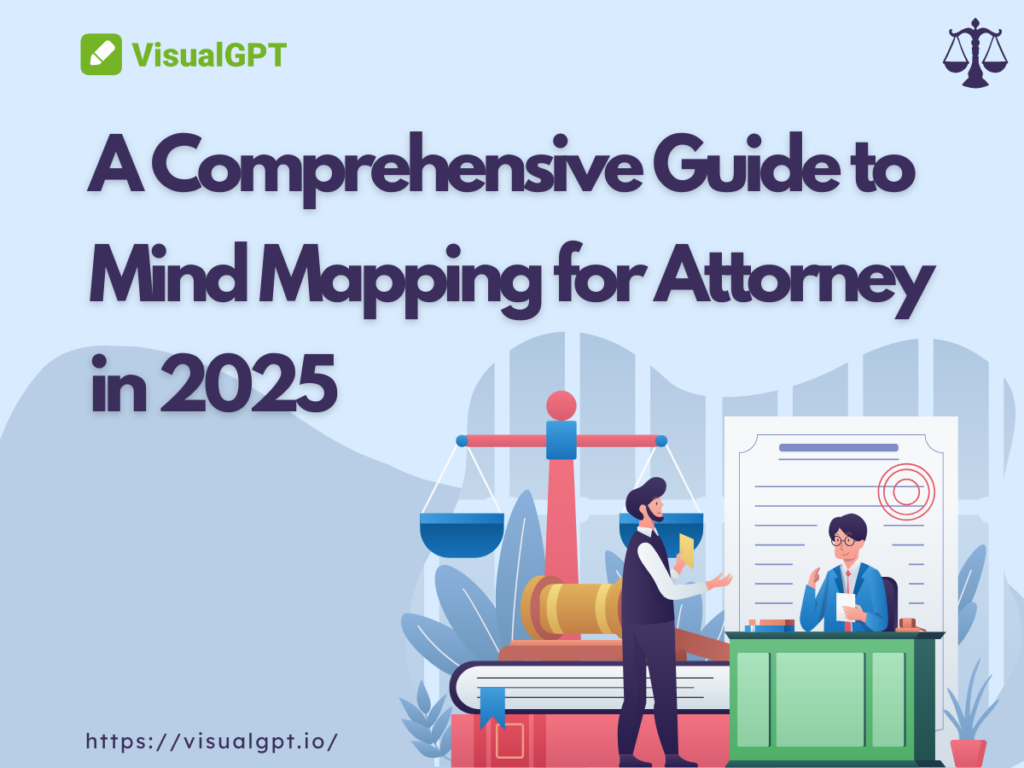Introduction – Why Mind Mapping Matters for Attorney
The Complexity of Legal Work
Let’s face it—law is complicated. Every case can involve dozens of people, hundreds of documents, and layers of facts and interpretations. It's easy to feel overwhelmed. Now think about trying to explain that all to a client or judge in a clear and simple way. Not easy, right? That’s where mind mapping for attorney enters the picture. It’s a way to make sense of the mess and see everything clearly at a glance.
What Is Mind Mapping and Why It Helps Lawyers
A mind map is like a visual thinking map. You start with one big idea in the center—like a case name or legal issue—and then draw branches that break it into smaller parts. Each part can be a law, fact, argument, deadline, or person involved.
For lawyers, this means:
- Organizing ideas logically
- Seeing connections between facts and arguments
- Making better legal strategies
When you use mind mapping for attorney work, you spend less time flipping through documents and more time thinking smart.
What You’ll Learn in This Guide
In this blog, you’ll discover:
- Why attorneys benefit from mind maps
- Practical use cases in daily legal tasks
- Best tools for legal mind mapping
- How VisualGPT can make the process faster and smarter
- Templates and tips to get started right away
Benefits of Mind Mapping for Attorney
Managing Complex Legal Information
Legal documents are detailed. One case might involve multiple statutes, court rulings, and witness testimonies. A mind map lets you lay all this out on one screen. You’ll instantly see what connects to what. Instead of reading long paragraphs, you see your thoughts visually—clean, fast, and simple.
Structuring Legal Thoughts
As an attorney, your brain is your biggest tool. But it’s not a filing cabinet. Mind maps help you take ideas out of your head and put them into clear branches. That structure helps you:
- Build legal arguments
- Spot missing info
- Avoid repetition
Whether you're prepping for court or drafting a contract, mind mapping for attorney is your digital assistant for thinking clearly.
Presenting Legal Arguments Clearly
Ever tried explaining a complex case to a client in plain English? It's tough. A mind map makes it easy. You can show your reasoning step by step. You don’t need to scroll through slides or read from notes. Just one map says it all. Clients love it. Judges love it. And you’ll love it too.
Supporting Knowledge Management and Legal Training
Law firms are built on knowledge. Senior lawyers have tons of experience, but junior lawyers need to learn fast. A mind map turns your knowledge into a shareable resource. You can use it for:
- Internal legal training
- Explaining procedures
- Reviewing case law
Tools like VisualGPT even let you save your maps and turn them into templates for future use.
Common Use Cases of Mind Mapping for Attorney Work
Case Breakdown
Break a case into:
- Parties involved
- Timeline of events
- Legal issues
- Arguments for each side
With mind mapping for attorney, you can spot strong and weak points fast. For example, in a criminal defense case, a mind map can visually separate charges, evidence, witness statements, and legal defenses. This allows attorneys to prepare more targeted questions, uncover logical gaps, and coordinate team efforts more effectively. The visual layout helps lawyers quickly brief paralegals, build trial strategies, and identify risks early in the case timeline.
Evidence Mapping
Who said what? What evidence supports which claim? A mind map shows:
- Testimonies
- Photos
- Documents
- Cross-references
Using mind mapping for attorney, you can group all evidence in one view to see how it strengthens or weakens your argument. Take a civil dispute, for example: you can link emails, contracts, and statements under each party to assess credibility. This makes your evidence review more efficient and supports quicker decisions during settlement or trial prep. Mind maps also help flag inconsistencies that may need deeper investigation.
Legal Research Visualization
When you read legal articles or court decisions, it’s easy to get lost. But if you map out the key points, you'll understand and remember better.
VisualGPT lets you turn text into a legal mind map in seconds. Just copy the article, and the AI does the rest. For example, when analyzing a constitutional law opinion, you can branch out key legal principles, relevant precedents, and majority versus dissenting arguments. Mind mapping for attorney ensures you retain more information and draw meaningful insights without rereading the full text every time.
Client Briefing
Want to impress your clients? Don’t hand them a 20-page document. Show them a clean, simple mind map. Walk them through the case and let them ask questions.
With mind mapping for attorney, you can simplify complex legal issues into an easy-to-follow structure. For example, during a divorce consultation, you can visually present assets, custody issues, and timelines in one glance. This helps clients understand their situation clearly and make better decisions. Legal mind maps also reduce misunderstandings and build trust faster, especially when working with clients unfamiliar with legal jargon. It's a smarter way to communicate.
Contract Structuring
Contracts can be full of legalese. But a mind map helps you:
- See each clause
- Spot missing sections
- Catch overlaps or contradictions
With mind mapping for attorney, you can turn dense contracts into visual flows, making each section easier to review. For instance, in an employment agreement, you might break down responsibilities, confidentiality terms, and termination clauses in different branches. This helps ensure compliance, improves drafting accuracy, and supports negotiation with the client or opposing counsel. It also saves time when reviewing similar contracts in the future.
For Law Students
Law school can be intense. Mind maps help students:
- Prepare for exams
- Review case law
- Remember procedures
Mind mapping for attorney is a smart habit to build early. Let’s say a student is studying torts—they can use a mind map to connect elements of negligence, defenses, and related case precedents. This turns abstract concepts into clear visuals. Over time, the student builds a library of visual notes that are more helpful than traditional outlines.
Top Tools of Mind Mapping for Attorney in 2025
VisualGPT – AI-Powered Legal Mind Maps in Seconds
VisualGPT stands out with its fast and intelligent design. It uses AI to instantly turn your legal notes, case summaries, or research into clear, structured mind maps—no dragging, formatting, or manual setup required. Just paste your content, click once, and your map is ready.

XMind – Clean and Logical Layouts
XMind offers great designs that make your maps look professional. It’s perfect for organizing arguments or outlining a case.
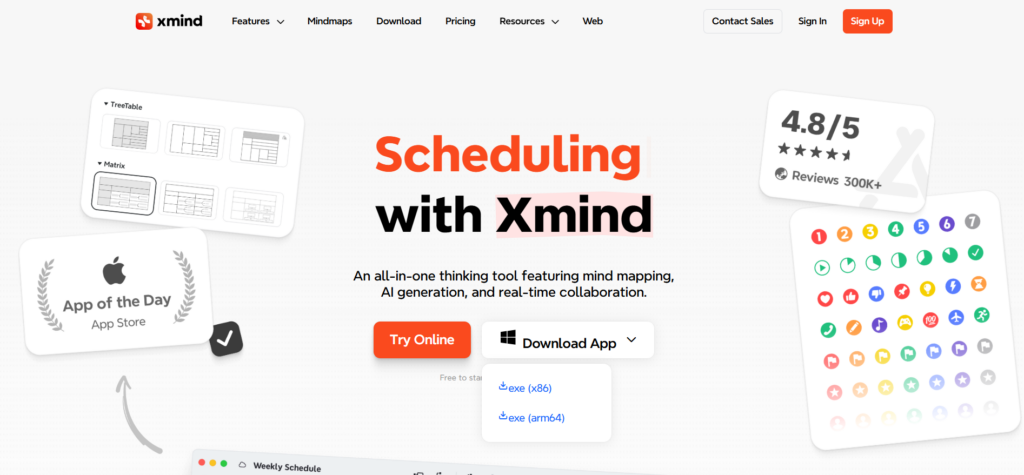
Miro – Great for Team Collaboration
Need to work with other lawyers or staff? Miro gives you a shared whiteboard. Add sticky notes, comments, and timelines together.
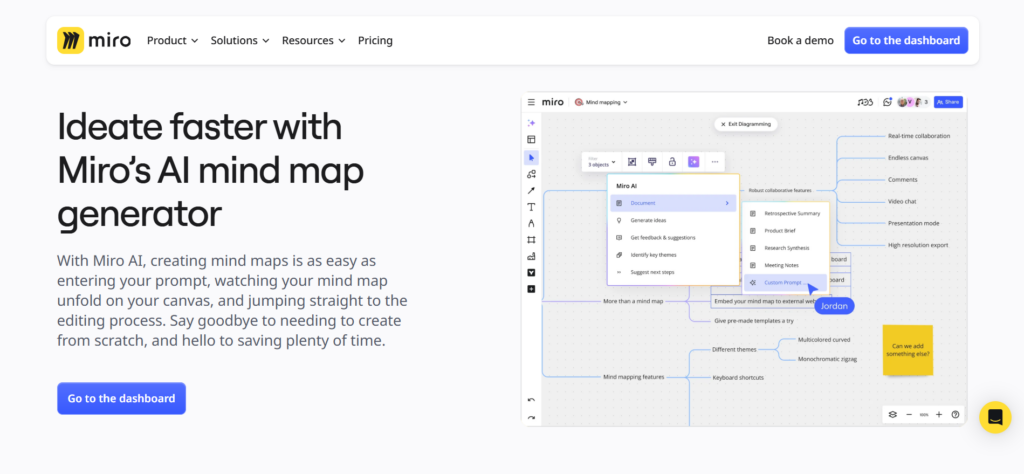
MindMeister – Cloud-Based Visual Thinking
This tool lets you save and share your maps online. It’s great for remote legal teams or multi-office law firms.
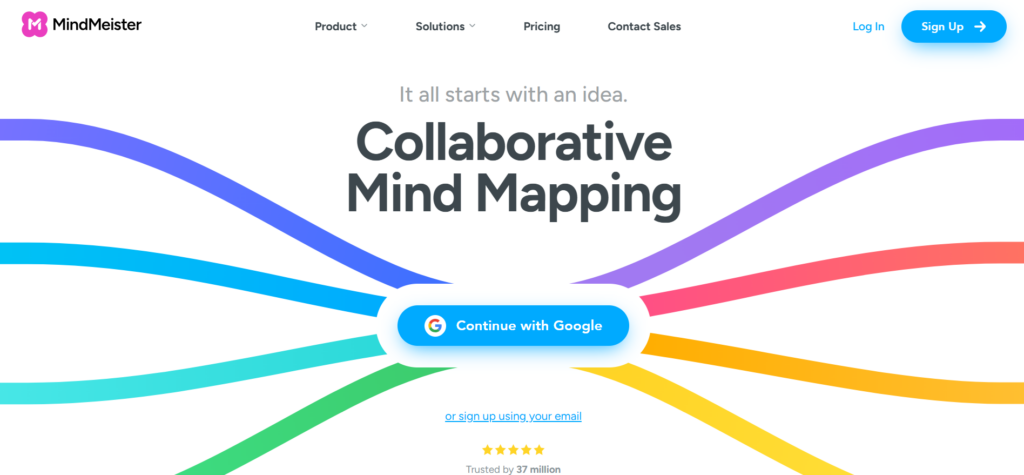
Whimsical – Simple Interface for Legal Briefing
Whimsical focuses on speed and clarity. It’s perfect when you want to explain something to clients or show a quick outline to colleagues.

Notion + Mermaid – Technical Users’ Choice
If you're into coding or advanced workflows, this combo is great. You can create markdown-based mind maps inside your notes.
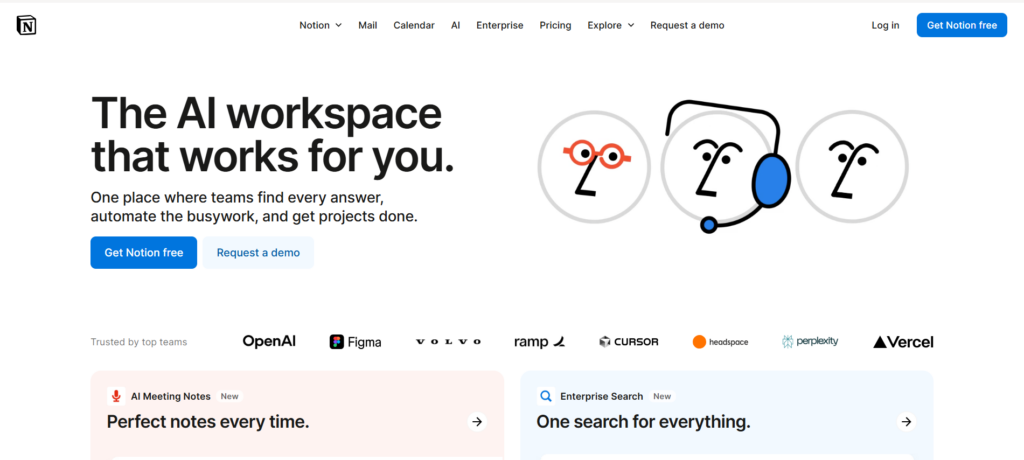
Introducing VisualGPT – An AI Mind Map Maker for Attorney
What Makes VisualGPT Ideal for Legal Professionals
VisualGPT is designed with lawyers in mind. It’s not just a drawing tool—it’s smart. You paste your content, and the AI turns it into a legal mind map instantly.
For busy lawyers, this means less time on layout and more time on strategy. Whether you're briefing a client or preparing trial notes, mind mapping for attorney becomes easier, faster, and more scalable with this tool. It’s the go-to choice when speed and clarity matter most.

Use Cases: From Legal Research to Case Visualization
With it, you can:
- Turn a long case study into a map in seconds
- Summarize research into visual branches
- Create templates for common legal problems
- Make client-ready maps for meetings
It works for solo lawyers, firms, and even law students who want to stay organized.
How to Generate a Legal Mind Map with AI in Seconds
Here’s how easy it is:
Step1 : Go to VisualGPT
Step2 : Paste your text (case summary, contract, argument)

Step3 : Click “Generate”

Step4 : Edit or export it as needed

You can even save your maps or reuse them later. It’s perfect for busy attorneys who want smart results without extra work.
Templates and Pro Tips for Mind Mapping for Attorney
Civil Case Mind Map Structure
Start with the case name. Then add:
- Plaintiff and defendant
- Key facts
- Legal issues
- Evidence
- Argument branches
- Expected outcome
VisualGPT has built-in templates to make this faster.
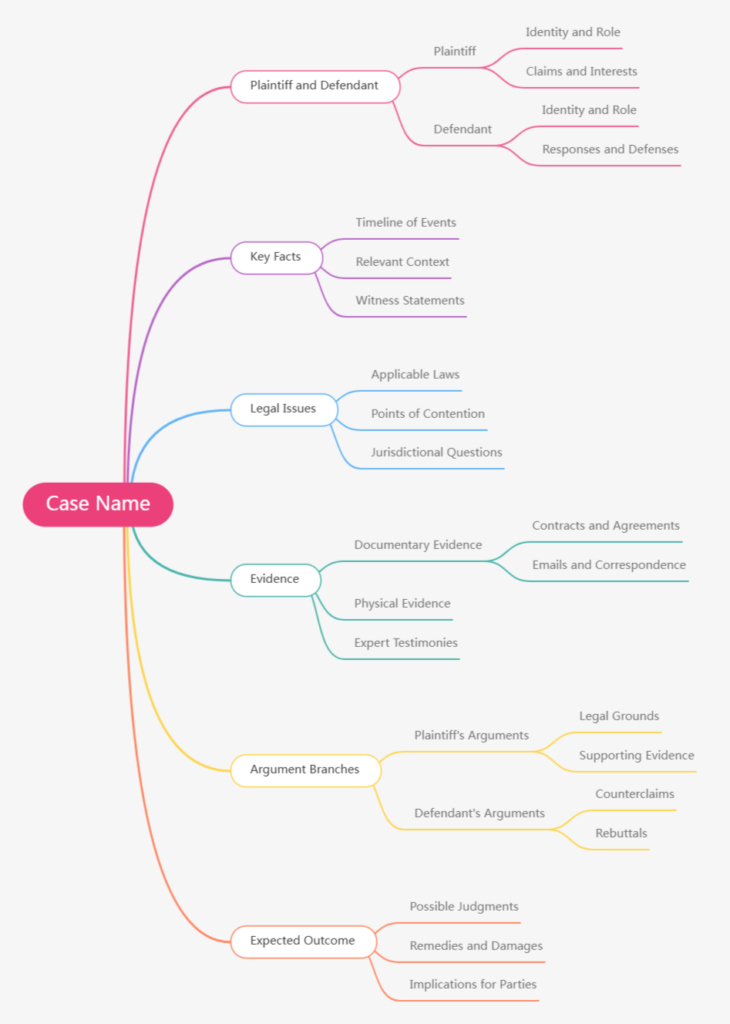
Three-Step Legal Reasoning Map
Use this format:
- Rule (What law applies?)
- Application (How does it fit this case?)
- Conclusion (What’s the likely result?)
This is perfect for courtroom prep or memo writing.

Bar Exam Mind Map for Legal Knowledge Review
Studying for the bar? Break subjects like torts, contracts, or criminal law into visual maps. Use them to review every day. It’s much better than reading long notes.

Pro Tips for Effective Legal Mind Mapping
Keep it simple
In mind mapping for attorney, clarity beats complexity. Focus on key issues—like legal claims, deadlines, or arguments. A simple structure helps you stay organized and think faster. For example, break down a litigation case into just parties, facts, and legal grounds to avoid confusion.
Use colors and icons
Colors and icons make your legal map easier to scan. In mind mapping for attorney, try red for deadlines or blue for statutes. Add icons like clocks or gavels to highlight urgency or rulings. It’s a small trick that makes a big impact during legal reviews or team briefings.
Reuse your best maps
Legal tasks often repeat. With mind mapping for attorney, you can reuse existing templates—like for contracts or court motions.
Work with your team
Teamwork is vital in law. Mind mapping for attorney lets you share visuals during case planning. Use one map to assign roles or brainstorm legal arguments.
Use AI for speed
Manually creating legal mind maps takes time. With VisualGPT, AI builds your mind map instantly from case summaries or legal text. This makes mind mapping for attorney faster and smarter—perfect for busy lawyers who need results without delays.
Frequently Asked Questions (FAQs) About Mind Mapping for Attorney
Q: What exactly is mind mapping for attorney work? A: It's a way for lawyers to visually organize legal thoughts, case facts, laws, and strategies. Instead of long notes, you use a structured map to see everything clearly and quickly.
Q: Is mind mapping for attorney only useful in big cases? A: No. Whether you're working on a small contract or a major lawsuit, legal mind maps help you break down information, spot issues, and build stronger arguments.
Q: Can I use mind mapping for attorney tasks during trial prep? A: Absolutely. It’s especially useful for outlining evidence, witness timelines, and key objections. Many lawyers rely on mind maps to stay focused during courtroom presentations.
Q: Does mind mapping help with legal research? A: Yes. You can use it to organize statutes, case law, and citations. Mind mapping for attorney tasks makes research easier to understand, compare, and apply.
Q: How can law students benefit from mind mapping? A: Students can use mind maps to study for exams, organize case briefs, and review complex subjects like constitutional law. It helps with memory, speed, and clarity.
Q: Can mind mapping for attorney improve client communication? A: Definitely. A visual map helps clients see how a case is structured. It’s easier for them to follow your legal advice and ask better questions.
Q: Is it safe to use digital mind maps for legal cases? A: Yes, as long as you use secure platforms and avoid including sensitive client details in public tools. Many legal professionals now rely on digital mind mapping safely.
Q: Does mind mapping for attorney save time? A: It does. Instead of flipping through documents, you can find key facts and legal issues in one place. It also speeds up team discussions and briefings.
Q: What’s the best way to start mind mapping as a lawyer? A: Begin with a simple case—map out parties, legal issues, and facts. Over time, you’ll create your own system. Tools like VisualGPT can help, but even pen and paper work.
Conclusion – Transform the Way You Work with Mind Mapping for Attorney
Legal work is hard—but organizing it doesn’t have to be. With mind mapping for attorney, you can think more clearly, work faster, and communicate better.
From case breakdowns to legal research, mind maps help at every step. And when you use AI-powered tools like VisualGPT, the process becomes effortless.
Here’s your next step:
- Pick a legal task you’re working on today
- Go to VisualGPT
- Try building a mind map for it
You’ll be amazed at how much clearer everything becomes.


